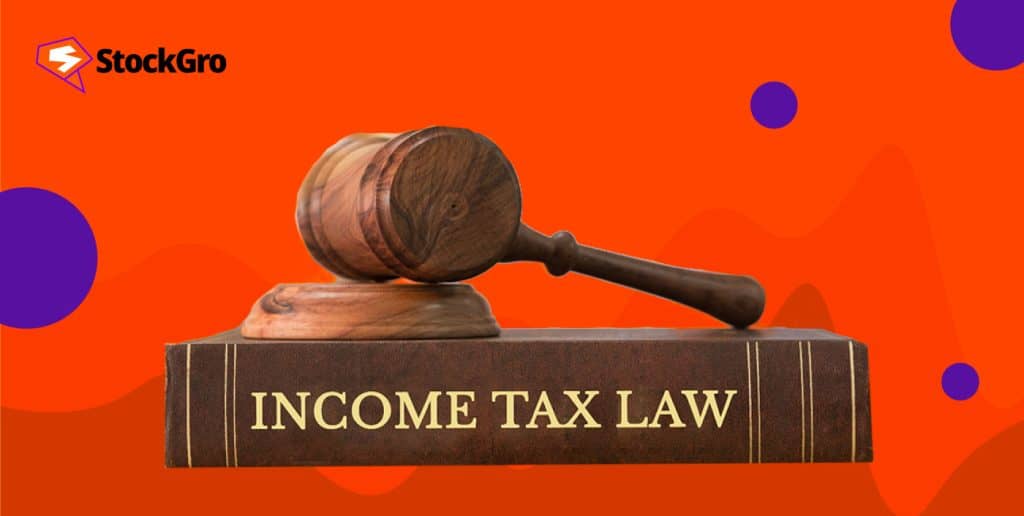
Did you receive an income tax notice u/s 143(1)? Do you feel under pressure? Don’t worry. Not all tax notices are scary. Some even have good news! Please take a moment to read and comprehend the letter completely.
This piece will help you comprehend what it means and how to respond. Let’s make sense of your notice together.
What is section 143 of the Income Tax Act?
The IT department’s central processing centre does the first check of your income tax return (ITR). It’s a fully automated assessment. The system looks for obvious errors and inconsistencies. It also verifies the tax calculations and payments you reported.
After the preliminary assessment, the department sends you an intimation under income tax section 143. The notice tells you the results of the initial evaluation.
The intimation highlights any discrepancies, errors, or adjustments made. You will get this notice by email. Additionally, an SMS alert will be sent to the registered telephone number of yours.
The department usually sends the notice soon after your filing. Still, they can take up to 9 months from the end of the fiscal when you file the return to send it. Once received, you have a month to respond.
If you do not get an intimation notice within the specified time limit from the end of the fiscal year when you submit your return, your ITR-V acknowledgement will be considered the intimation.
Also read: Section 194IB – TDS on rent under Section 194IB of Income Tax Act
Why might you receive a letter of intimation?
You might receive an intimation notice for a few reasons:
- Excess tax paid: If you paid more than needed, the notice will mention the refund amount. Refunds are given if they are more than ₹100.
- Shortfall in tax payment: The opposite of the above. The communication will include the additional amount you must pay if you pay less. It will include a challan for the payment.
- Return matches: If your return matches their calculations, the notice will confirm this. No further action is needed.
Apart from this, there are other reasons too. U/s 143(1)(a) you can get the notice for these reasons:
- You filed your return late and claimed a loss.
- Although an audit report states you cannot, you claimed an expense.
- You claimed deductions but filed after the deadline.
- There’s an error in salary details or TDS. This means:
- There is a discrepancy between your business income and Form 26AS.
- Your pay on Form 16 is different from what you reported on your return.
- Your taxable salary in your return doesn’t match what’s in Form 16.
You may also like: Refund 101: A guide to growing your income tax returns refund
Contents of the letter
- Permanent details of the assessee: The letter includes your name, contact info, and other main information.
- ITR filing details: It provides the acknowledgement number and the filing date of your return.
- Refund sequence number: If applicable, it includes a refund sequence number for tracking your refund.
- Tax calculation as provided by you: This section shows the tax amount you calculated and reported in your return.
- Tax computed under section 143(1): It details the tax calculation done by the department, highlighting any discrepancies or adjustments.
You may also like: 5 tips to prevent PAN card fraud
Steps to take upon receiving the letter
Verify your personal details
First, confirm the letter for your personal details, including your name, PAN number, and assessment year. Make sure these details match your records to confirm the notice is intended for you.
Check for tax payable or refundable
Next, determine if the intimation indicates any tax payable or refundable. The system automates payment if your refund is ₹100+. In the second scenario, when payment is due, make a note of the amount and get ready to look into the justification for the difference.
Identify the cause of discrepancy
If the notice says you owe tax, find out why. Common reasons for discrepancies include arithmetic errors, inadequate documentation, undeclared income, or deductions claimed under incorrect sections. Carefully review the calculations and compare them with the figures in your original tax return.
Review adjustments made
Go through the adjustments made by the tax department and compare them with your return. This will aid in identifying any potential mistakes or mismatches. Verify the income, deductions, and exemptions mentioned in the intimation to ensure they match your tax return.
Respond appropriately
If you agree with the changes, pay the extra tax right away. In case you are not satisfied, you may request a correction. It could be beneficial to speak with a qualified accountant. They can assist you in responding and submitting it online using the tax portal.
Keep records
Maintain a copy of the intimation, your response, and any proof of submission. For future reference.
Bottomline
We hope you now understand the letter of intimation meaning. Receiving a notice under section 143 of Income Tax Act can be straightforward if you handle it promptly. Review your details, understand any discrepancies, and take the necessary actions. Staying organised and informed ensures compliance and helps you address any issues effectively. Always keep records for future reference.
FAQs
- What do I do if intimation US 143/1 is received?
If you get an intimation under section 143(1), first of all ensure that the personal information you provided is correct. Then check whether you need to pay additional tax or whether you are entitled to some amount back from the department. Search for errors or incompatibilities. If, after reading this notice, you are in concurrence with the established tax, then remit the amount. If not, ask for a correction. Collect all the documents for further use as may be necessary.
- What is notice under section 143(1) of the Income Tax Act?
The notice informs you of the result of the first screening of your tax return. The notice makes an inspection for errors/mismatches. It tells whether you are supposed to pay more in taxes or in case you are expecting a refund. You receive this notice by email and an SMS alert.
- How do I reply to income tax notice under section 143(1)?
To reply to an income tax notice under section 143(1), first read the notice carefully. Check for any mistakes or mismatches. If you agree with it, pay any extra tax owed. If you disagree, log in to the income tax e-filing portal and file a rectification request. You might want to ask a CA for help. Save all your documents and proof of submission.
- How to pay intimation u.s. 143 1 online?
To pay an intimation under section 143(1) online, log in to the income tax e-filing portal. Click on “e-Pay Tax” and select “Pay Now” under “Tax Payment”. Choose “Demand Payment” and enter the required details from the notice. Select your bank and pay using net banking or a debit card. Save the receipt for your records.
- What happens if I don’t receive an intimation order from income tax?
If you don’t get an intimation order from the Income Tax Department within a year, don’t worry. Your ITR-V acknowledgment will be treated as the intimation. This means your return has been processed without any issues. Keep your ITR-V safe as proof.

